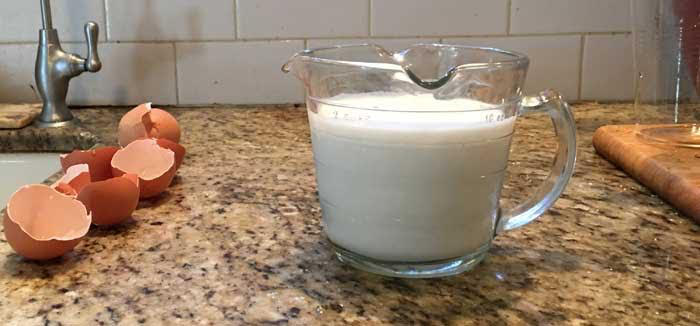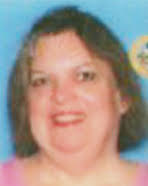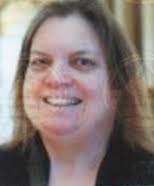
A few weeks ago I received this email from a reader:
“I’m wondering where you got your glass measuring cup shown here: https://www.debralynndadd.com/toxic-free-kitchen/dish/beverage/fresh-coconut-milk-and-cream/
It looks like it is free of painted-on markings and has multiple pour spouts. Just wondering what brand it is.”
I replied that I purchased it at Crate and Barrel a few years ago, but they don’t sell it any more.
But this question got me thinking about design and style and aesthetics, and how one might define a “toxic free aesthetic.”
Aesthetics in general have to do with the beauty of something.
An aesthetic is a set of principles underlying and guiding the work of a particular artist or artistic movement. So one might say “a Victorian aesthetic.”
But I think this term could just as well be used to refer to how design and it’s beauty or lack thereof results from a particular set of principles.
For example, the “modern” aesthetic is rooted in industrial manufacturing. So instead of items having a style that emerges from things made by hand from natural materials, for example, forms are simple and made from materials that can flow cheaply and easily through an industrial manufacturing process.
Which led me to wonder: If we started with being toxic free as a guiding principle, what might the aesthetic look like?
Measuring Cup
This measuring cup in the photo above I think is a good example of toxic free aesthetic.
It’s simple and direct, form following function.
It uses a nontoxic material.
And it incorporates the design into the material of the product, rather than use a different material.
In the case of the measuring cup, most measuring cups use paint to mark lines and numbers. While the paint is nontoxic by the time it reaches the user, the paint itself is toxic and likely would produce toxic waste during manufacture, use, and disposal.
So part of the aesthetic would be to choose materials throughout that create zero toxic exposure or waste at all stages of the life cycle.
 Clock
Clock
With the idea of toxic free aesthetic in mind, when I walked into a reception area and saw this cute little clock sitting on the counter, I immediately thought, “Oh this is toxic free aesthetic!”
Even though I hadn’t yet formulated guidelines, I could recognized it when I see it.
In real life, this appears to be an unfinished block of wood (no noticeable finish or odor) with a luminous LED display (the light aspect of it doesn’t really show in the photo).
I don’t know how they get the light into the wood, but the materials are simply wood and light.
I’m going to order one of these for myself. I need a clock I can see in the dark for my bedroom and this is perfect.
GEARONIC Wooden Alarm Clock. Tells time, date, temp and also has an alarm clock function via LED Light. Tells time, date, temperature and also has an alarm clock function. Three AAA batteries, “No buttons or plastic parts.”
NOTE: The one I saw was battery-powered. The description says it is powered with USB cable. I think you can use either.
Face
Two things inspired me to write this section.
First, I’ve been going to farmer’s markets every weekend for the past month and one of the things I’ve noticed is the beautiful faces of these farm women who are growing food and out in the fields. Just their beautiful bare faces without make-up.
And then I came across a photo ID card in my wallet with a picture that was taken on the spur of the moment. I had no makeup on because I don’t wear makeup everyday. I only wear makeup when I need to have a “professional” look.
And I looked at that bare-face ID card next to my driver’s license photo with makeup and I really preferred my bare-face photo!
 |
 |
| Debra with Make-Up | Debra without Make-Up |
I was surprised because the idea of “beauty” that is promoted in the consumer world is full makeup and hairstyle, but my aesthetic is becoming wanting to see the beauty of the actual face of the person, rather than have it obscured with makeup.
So I think the toxic free aesthetic is no makeup or minimal makeup rather than looking “painted,”
Creating a Toxic Free Aesthetic
I think this is an ongoing discussion. I would love to hear your thoughts.
And I would love to develop a toxic free aesthetic that designers could use to create products that we would enjoy using.
Feel free to post other products you think have a toxic free design aesthetic in the comments. With images.




I have a pyrex measuring cup that I have had for years and unfortunately I do not remember where I purchased it but It has the measuring marks on the outside not the inside where food would come in contact with it.
Hi Debra,
Great site! May I get your opinion further on the lead/heavy metals in painted markings on measuring cups issue?
You said “the paint is nontoxic by the time it reaches the user.” Can you please explain that further? I also noticed you use a non painted measuring cup though.
As someone else noted, Tamara Rubin claims that “many” measuring cups with painted markings have lead and other heavy metals in the paint.
However, a supplier of non toxic kitchen supplies, Mightynest, that sells the anchor hocking glass measuring cups with painted red markings says the manufacturer told them: “it would be illegal for them to use paint with lead in it and not communicate that to their customer.” Mightynest went on to say the cups are “perfectly safe.”
The anchor hocking site also claims their products are “lead, cadmium and heavy metal free.”
Furthermore, the EPA says “In 1978, the federal government banned consumer uses of lead-containing paint”
If that is all true why the concern over lead in the painted markings at all? I want to understand this because I tested positive for lead some time ago though subsequent tests have been negative.
Thank you!
That’s a very good question. Tamara Rubin seems to be the only one concerned and she comes by this concern because she says her own testing shows this paint to be positive for lead. But if lead paints for consumer uses are not being sold, how it could it test positive?
I didn’t choose my measuring cup because it didn’t have paint. I chose it because I liked the aesthetics.
I reached out to Tamara on another issue, but she didn’t respond, despite several attempts on my part. I’d love to talk with her.
It’s illegal for manufacturers to make claims like their products are head, cadmium and heavy metal free if in fact they contain these metals.
I think this could be resolved by having someone else test the paint to see if their results agree with Tamara’s.
The “wood” clock on your amazon link is plastic. Read the fine print.
Ah, thank you. I saw one of these clocks and it looks like wood and had no odor etc. I’m going back to the place where I saw it this week. I’ll take a closer look.
I really like your Face section about a no makeup look. It underlines how much we are influenced by cosmetic companies promoting the idea that women should be mortified if caught without their face all made-up, and that we are a lesser person without makeup. With the recent trend of celebs posting nomakeup photos, I always like their barefaced look far better than their painted face look where the first thing you notice is the makeup and can barely see the person under it all.
Thank you.
I used to be one of those who wouldn’t leave the house without my makeup and while writing this post I looked at made-up faces and they really did look painted to me.
I stopped wearing make-up altogether when I met Larry thirty years ago. He didn’t want to kiss me with makeup on, so that was the end of that!
I still wear make-up for public appearances, like giving a lecture or being on television, but otherwise, I’m a bareface and love it.
Hi Debra, my understanding is that the painted markings on the glass measuring cups can actually contain lead. This came from Tamara Rubin’s work regarding lead in household products. Thus I really like your unmarked one and would like to find something similar. And I do think it looks beautiful as well.
Ah, well yes. I didn’t know that.
While I greatly appreciate Tamara’s work, I need to say that there are products that contain lead and there are actual lead exposures.
The food being measured would not be exposed to lead from the paint on the outside of the cup and lead is not absorbed through the skin, according to scientific sources. So it wouldn’t harm you to touch it. Nor does it outgas.
I’m much more concerned about lead from sources that result in a toxic exposure to the user, such as lead in paint dust that is inhaled.